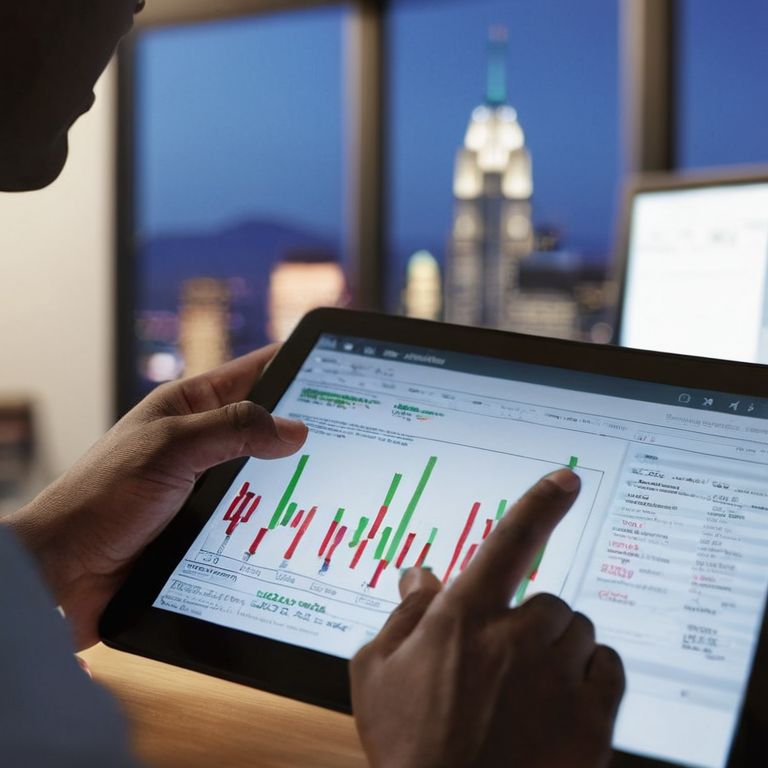I still remember the days when I was drowning in debt, and the thought of building an emergency fund seemed like a distant dream. But as I began to take control of my finances, I realized that figuring out where to keep your emergency fund was a crucial step. I was tired of hearing generic advice about storing my emergency cash in a “safe” place, without any real explanation of what that meant. So, I set out to find the best solution for myself, and now I want to share that knowledge with you.
As someone who’s been in the trenches, I promise to give you honest and actionable advice on where to keep your emergency fund. I’ll cut through the noise and provide you with a clear roadmap, based on my own experiences and mistakes. My goal is to help you build a safety net that will give you peace of mind, without breaking the bank. In this article, I’ll share my top picks for storing your emergency cash, and explain why I believe a high-yield savings account is the way to go. So, let’s get started on this journey to financial freedom, and explore the best options for where to keep your emergency fund.
Table of Contents
Where to Keep Your Emergency Fund

When it comes to storing your emergency cash, I’ve found that high-yield savings accounts are the way to go. Not only are they liquid assets, meaning you can access your money when you need it, but they also earn a higher interest rate than traditional savings accounts. I’ve personally used these types of accounts to grow my emergency fund over time, and I’ve been impressed with the results.
Another option to consider is a short-term investment account, such as a money market fund. These accounts typically offer low-risk investment options and can provide a slightly higher return than a traditional savings account. However, it’s essential to carefully evaluate the financial institution selection criteria before choosing an account, as some may have higher fees or minimum balance requirements.
In terms of emergency fund allocation strategies, I recommend keeping your emergency fund separate from your everyday spending money. This will help you avoid the temptation to dip into your savings for non-essential purchases. By keeping your emergency fund in a dedicated account, you can ensure that you have a financial safety net in place, and you can focus on building your wealth over time.
High Interest Savings Accounts for Emergencies
When it comes to storing your emergency fund, I’ve found that high-yield savings accounts are a great option. They offer a safe and liquid place to park your money, earning a decent interest rate while keeping your funds easily accessible.
I’ve personally used high interest savings accounts for my own emergency fund, and it’s been a game-changer. By earning a higher interest rate than a traditional savings account, I’ve been able to grow my safety net over time without taking on any significant risk.
Liquid Asset Management Tips for Beginners
As a beginner, managing your liquid assets effectively is crucial. I’ve learned that prioritizing simplicity is key when it comes to emergency funds. You don’t want to overcomplicate things, especially when you’re just starting out.
When I first began building my safety net, I focused on low-maintenance options that wouldn’t eat into my daily expenses. This approach allowed me to make steady progress without feeling overwhelmed.
Smart Emergency Fund Allocation Strategies

When it comes to emergency fund allocation strategies, it’s essential to strike a balance between liquidity and growth. I’ve found that allocating a portion of my emergency fund to _high interest savings accounts_ has been a game-changer, providing easy access to my money while still earning a decent interest rate. This approach has allowed me to maintain a sense of security while also making the most of my savings.
In addition to high interest savings accounts, I also consider _short term investment options_ for my emergency fund. These investments typically offer lower returns than long-term investments, but they provide the liquidity I need in case of an emergency. When selecting a financial institution, I look for ones that offer low fees, high interest rates, and easy online management. By doing my research and comparing different options, I’ve been able to find an institution that meets my needs and helps me achieve my financial goals.
To determine the right emergency fund size, I use a combination of methods, including calculating my monthly expenses and considering my income stability. By having a clear understanding of my financial situation, I can allocate my emergency fund effectively and make sure I have enough savings to cover unexpected expenses. This approach has given me peace of mind and allowed me to focus on other aspects of my financial journey, such as investing in _low risk investment options_ and planning for long-term growth.
Calculating the Right Emergency Fund Size
To determine the right size for your emergency fund, you’ll want to consider a few key factors, including your income, expenses, and debt. A general rule of thumb is to save three to six months’ worth of living expenses, but this can vary depending on your individual circumstances.
When calculating your emergency fund size, it’s essential to prioritize your essential expenses, such as rent, utilities, and food, to ensure you can cover these costs in case of an unexpected event.
Low Risk Investment Options for Savings Growth
When it comes to growing your emergency fund, it’s essential to consider low-risk investment options that can provide a steady return without putting your principal at risk. I’ve found that investing in short-term bonds or money market funds can be a great way to earn a small return while still maintaining easy access to your funds.
To maximize your earnings, look into high-yield savings accounts that offer competitive interest rates and minimal fees. These accounts are designed to help your money grow over time, and they’re usually FDIC-insured, which means your deposits are insured up to $250,000.
My Top 5 Picks for a Secure Emergency Fund
- Keep it liquid: opt for a high-yield savings account that’s easily accessible
- Diversify your safety net: consider a mix of savings accounts and low-risk investments
- Automate your savings: set up a monthly transfer to build your emergency fund consistently
- Choose a account with low fees: avoid accounts that eat into your savings with unnecessary charges
- Consider a savings app: explore digital tools that help you save and track your emergency fund with ease
Key Takeaways for a Stress-Free Emergency Fund
I recommend keeping your emergency fund in a high-yield savings account for easy access and a decent interest rate
Calculating the right emergency fund size is crucial – aim for 3-6 months’ worth of living expenses to ensure you’re covered in case of unexpected events
Regularly reviewing and adjusting your emergency fund allocation is essential – set a weekly ‘money date’ to stay on top of your finances and make adjustments as needed
A Word of Wisdom on Emergency Funds
Your emergency fund shouldn’t be an afterthought, it should be a safeguard – a readily accessible cushion that can absorb life’s financial shocks, and for me, that means keeping it in a high-yield savings account where it’s both safe and growing.
Alex Barnes
Taking Control of Your Emergency Fund

As we’ve discussed, finding the right place to keep your emergency fund is a crucial step in building a stress-free financial foundation. We’ve explored the benefits of high-yield savings accounts and touched on smart allocation strategies, including calculating the right fund size and exploring low-risk investment options. By considering these factors and creating a personalized plan, you’ll be better equipped to navigate life’s unexpected twists and turns. Remember, it’s all about striking a balance between liquidity and growth, so take your time and research thoroughly to find the best fit for your financial situation.
In the end, it’s not just about where you keep your emergency fund, but about taking control of your financial future. By making informed decisions and adopting healthy money habits, you’ll be well on your way to achieving peace of mind and paving the road to long-term financial freedom. So, take that first step today, and start building the financial safety net you deserve – your future self will thank you for it, and you’ll be one step closer to living the life you want.
Frequently Asked Questions
What are the pros and cons of keeping my emergency fund in a savings account versus a money market fund?
I’ve weighed both options, and here’s my take: savings accounts offer easy access and low risk, while money market funds provide slightly higher returns, but with some investment risk. For me, the simplicity of a savings account wins out, but if you’re comfortable with a bit of volatility, a money market fund could be a good choice.
How do I determine the best high-yield savings account for my emergency fund, considering factors like interest rates and fees?
For me, the best high-yield savings account for my emergency fund has to balance a strong interest rate with minimal fees. I look for accounts with no monthly maintenance fees and low minimum balance requirements. Some of my top picks include Ally, Marcus, and Discover – they all offer competitive rates and low fees, making it easy to grow my safety net over time.
Are there any tax implications or benefits I should be aware of when choosing where to keep my emergency fund?
Honestly, taxes aren’t usually a major concern for emergency funds, but it’s worth noting that interest earned from high-yield savings accounts is taxable as ordinary income. I’ve found that the benefits of easy access and low risk far outweigh the minor tax hit, but it’s something to keep in mind when planning your emergency fund strategy.














